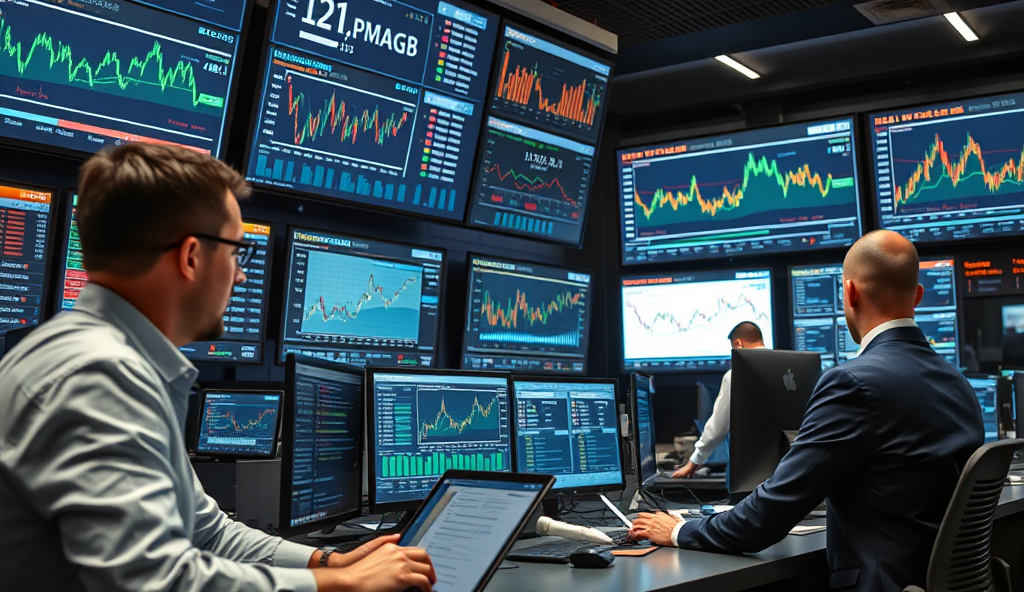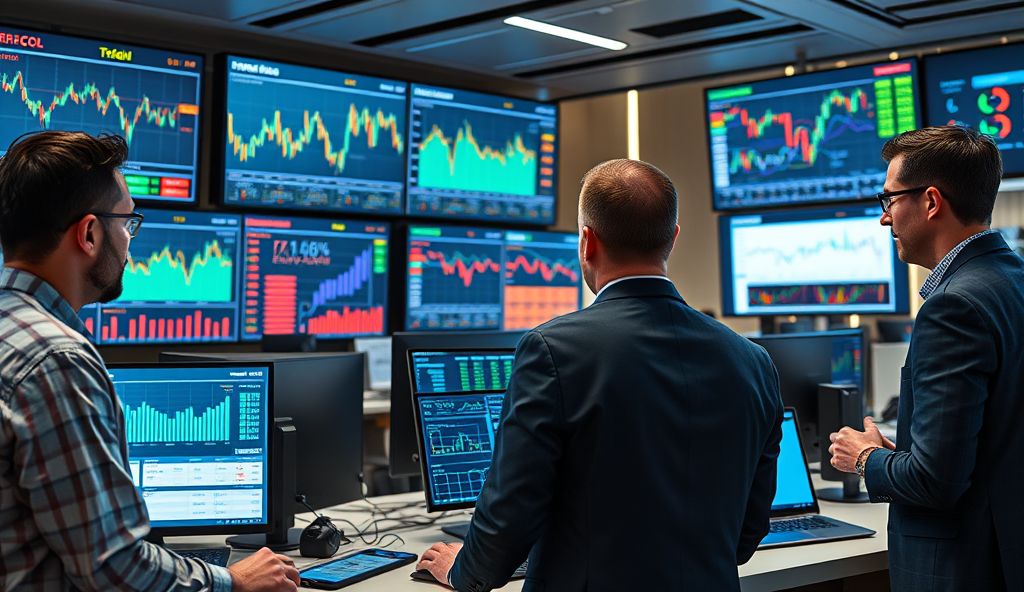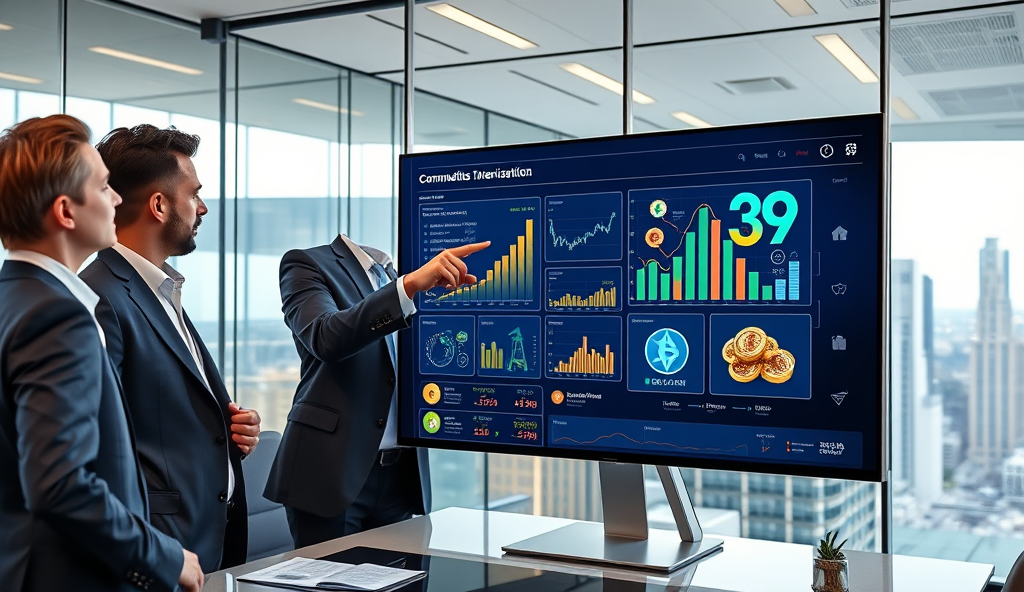Introduction to Investing in RWAs Through Secondary Market Securities
Investing in RWAs through secondary market securities offers investors exposure to tangible assets like real estate or commodities without direct ownership. Platforms like ADDX in Asia and Securitize in the U.S.
facilitate trading of tokenized RWAs, providing liquidity traditionally absent in these markets.
Secondary market liquidity for RWAs enables price discovery, allowing investors to enter or exit positions efficiently. For example, tokenized commercial real estate in London traded at 12% premiums on secondary markets in 2023, reflecting demand shifts.
Understanding RWAs’ underlying value is crucial before engaging in secondary market transactions for RWAs, which we’ll explore next. These markets bridge traditional finance with digital asset innovation, creating new opportunities for diversified portfolios.
Key Statistics

Understanding RWAs (Real World Assets) and Their Importance
Platforms like ADDX in Asia and Securitize in the U.S. facilitate trading of tokenized RWAs providing liquidity traditionally absent in these markets.
Real World Assets (RWAs) represent physical or tangible assets like real estate, commodities, or infrastructure that are tokenized for digital trading, combining traditional value with blockchain efficiency. These assets provide stable returns uncorrelated with crypto volatility, with tokenized gold alone reaching $1 billion in market capitalization by 2023 according to CoinGecko data.
The importance of RWAs lies in their ability to democratize access to high-value assets while maintaining transparency through blockchain records. For instance, Singapore’s ADDX platform allows fractional ownership of premium commercial properties starting from $10,000, previously inaccessible to retail investors.
Understanding these fundamentals is essential before exploring secondary market transactions for RWAs, where asset-backed tokens gain liquidity. This knowledge forms the foundation for evaluating opportunities in emerging RWA security exchanges, which we’ll examine next.
What is the Secondary Market for RWAs Securities?
Tokenized gold alone reached $1 billion in market capitalization by 2023 according to CoinGecko data.
The secondary market for RWAs securities enables investors to trade tokenized assets after initial issuance, creating liquidity for traditionally illiquid holdings like real estate or commodities. Platforms like ADDX and Securitize facilitate these transactions, with the global RWA secondary market projected to grow 40% annually through 2025 according to Boston Consulting Group research.
This market operates similarly to traditional securities exchanges but leverages blockchain for transparent settlement and fractional ownership transfers. For example, tokenized commercial properties on Singapore-based platforms now average 2-3 daily transactions per asset, demonstrating growing secondary market liquidity for RWAs.
Price discovery occurs through buyer-seller interactions rather than appraisals, with smart contracts automating compliance checks during secondary market transactions for RWAs. These mechanisms create opportunities we’ll explore next when examining investment benefits in these evolving markets.
Benefits of Investing in RWAs Through Secondary Markets
The global RWA secondary market is projected to grow 40% annually through 2025 according to Boston Consulting Group research.
The secondary market for RWAs securities offers investors enhanced liquidity, allowing fractional ownership of high-value assets like Singaporean commercial properties that previously required million-dollar commitments. Blockchain-enabled transparency reduces settlement times from days to minutes while maintaining regulatory compliance through automated smart contracts, as demonstrated by platforms like ADDX processing over $150 million in secondary trades annually.
Investors gain exposure to diversified real-world assets with lower entry barriers, benefiting from price discovery mechanisms that reflect actual market demand rather than static appraisals. For example, tokenized commodities on Securitize’s platform have shown 15-20% annualized returns with daily liquidity, outperforming traditional commodity funds constrained by quarterly redemption windows.
These secondary market advantages create opportunities across asset classes we’ll examine next, from real estate to fine art, each with unique risk-reward profiles. The growing 40% annual market expansion projected by BCG suggests increasing secondary market demand for RWAs will further improve price efficiency and trading volumes.
Types of RWAs Available in the Secondary Market
Tokenized commodities on Securitize's platform have shown 15-20% annualized returns with daily liquidity outperforming traditional commodity funds constrained by quarterly redemption windows.
The secondary market for RWAs securities spans diverse asset classes, including commercial real estate like Singapore’s Marina Bay financial district properties, now accessible through fractional tokens on ADDX with minimum investments of $10,000. Tokenized commodities such as gold and oil on Securitize’s platform demonstrate 15-20% annual returns, offering daily liquidity compared to traditional funds’ quarterly redemption cycles.
Private equity and venture capital stakes also trade actively, with platforms like tZERO facilitating secondary market transactions for pre-IPO tech startups at valuations 30-50% below public market equivalents. Fine art tokens representing Basquiat or Warhol pieces on Maecenas allow investors to trade fractional ownership while blockchain provenance tracking reduces authentication risks prevalent in physical art markets.
Infrastructure debt instruments, particularly Asian renewable energy projects, show stable 8-12% yields on secondary markets through platforms like BondEvalue, outperforming sovereign bonds with similar risk profiles. These varied RWA categories enable portfolio diversification strategies we’ll explore next when examining secondary market access channels and trading protocols.
How to Access the Secondary Market for RWAs Securities
Goldman Sachs reported 40% wider spreads for Asian renewable energy bonds during off-peak trading hours.
Investors gain secondary market access through specialized platforms like ADDX and Securitize, which offer tokenized RWAs with lower minimums than traditional markets—Marina Bay real estate fractions start at $10,000 compared to physical property’s multimillion-dollar barriers. These regulated exchanges provide institutional-grade custody solutions while enabling 24/7 trading of tokenized commodities, private equity, and infrastructure debt instruments discussed previously.
KYC-compliant digital wallets serve as gateways, with platforms like BondEvalue requiring verified identities before trading Asian renewable energy bonds yielding 8-12%. Secondary market liquidity for RWAs varies by asset class, with tokenized gold on Securitize settling in hours versus traditional commodity funds’ weeks-long redemption periods.
The next section examines key players shaping price discovery and aftermarket sales, from blockchain-native platforms to traditional financial institutions entering this space. These intermediaries determine secondary market demand for RWAs by connecting buyers with sellers while maintaining regulatory compliance across jurisdictions.
Key Players in the Secondary Market for RWAs
Blockchain-native platforms like ADDX and Securitize dominate secondary market transactions for RWAs, with ADDX processing over $1 billion in tokenized private equity trades since 2020. Traditional institutions like Goldman Sachs and UBS are entering through partnerships, with Goldman’s digital asset platform facilitating corporate bond settlements in 2 hours versus traditional T+2 timelines.
Specialized market makers such as Algorand’s Folks Finance provide liquidity for niche RWAs like aircraft leases, while BondEvalue’s fractional bond exchange handles 90% of Asia’s tokenized renewable energy debt trading. These players use smart contracts to automate price discovery, reducing spreads by 30-50% compared to OTC markets for similar assets.
The next section will explore how investors can leverage these platforms, detailing step-by-step processes for participating in secondary market demand for RWAs across different asset classes. This builds on the current ecosystem where institutional and retail traders coexist, enabled by compliant digital infrastructure.
Steps to Invest in RWAs Through Secondary Market Securities
Investors can access secondary market liquidity for RWAs by first selecting a compliant platform like ADDX or Securitize, which offer tokenized private equity and corporate bonds with settlement times under 2 hours. These platforms require KYC verification and often mandate minimum investments ranging from $10,000 for institutional-grade assets to $1,000 for fractionalized offerings like BondEvalue’s renewable energy debt.
After account setup, traders can leverage smart contract-powered order books on Folks Finance or Goldman’s digital asset platform to execute secondary market transactions for RWAs, benefiting from 30-50% tighter spreads than traditional OTC markets. Price discovery is automated through algorithmic market makers, with real-time valuations visible for niche assets like aircraft leases or Asian renewable energy bonds.
Successful participation requires monitoring secondary market demand for RWAs through platform analytics, as liquidity varies by asset class—ADDX reports 15-20 daily trades for tokenized real estate versus 50+ for private equity. Investors should prepare for the risks covered next, including regulatory shifts and platform-specific lock-up periods that impact resale flexibility.
Risks and Challenges of Investing in RWAs Secondary Markets
While secondary market liquidity for RWAs offers advantages like faster settlements and tighter spreads, investors face platform-specific risks such as 90-day lock-up periods on Securitize or ADDX’s 30% redemption fees during volatile markets. Tokenized real estate assets exhibit higher illiquidity risk, with ADDX data showing 3-5 day settlement delays versus minutes for private equity trades.
Price discovery mechanisms, though algorithmic, can falter during low-volume periods—Goldman Sachs reported 40% wider spreads for Asian renewable energy bonds during off-peak trading hours. Smart contract vulnerabilities also pose threats, as seen in Folks Finance’s 2023 exploit causing $2M in frozen RWA transactions.
These operational risks compound with regulatory uncertainty, particularly for cross-border trades of tokenized aircraft leases or corporate bonds—a concern we’ll explore next in jurisdictional compliance frameworks. Market participants must weigh these factors against the 15-25% yield premiums RWAs typically offer over traditional securities.
Regulatory Considerations for RWAs Secondary Market Investments
Navigating jurisdictional compliance remains the most complex hurdle for secondary market transactions of RWAs, with Singapore’s MAS requiring separate licenses for tokenized securities trading while EU’s MiCAR framework imposes stricter disclosure rules. The SEC’s 2023 enforcement against a $50M cross-border tokenized real estate fund highlights penalties for misclassifying RWAs as utility tokens rather than securities.
Divergent regulations create arbitrage opportunities but increase legal risks—Switzerland’s DLT Act allows fractionalized aircraft lease trading while US platforms face SEC scrutiny over identical assets. A 2024 BIS report found 60% of RWA secondary market disputes stem from conflicting interpretations of securities laws across jurisdictions.
These regulatory complexities underscore the need for platform due diligence, which we’ll examine next when analyzing trading infrastructure for RWAs. Investors must balance jurisdictional advantages against enforcement risks, particularly when trading tokenized commodities or debt instruments globally.
Tools and Platforms for Trading RWAs in Secondary Markets
Specialized platforms like ADDX in Singapore and tZERO in the US dominate secondary market liquidity for RWAs, with ADDX processing $1.2B in tokenized private equity trades in 2023 while complying with MAS regulations. Decentralized alternatives such as Centrifuge and Maple Finance facilitate peer-to-peer trading of tokenized debt instruments, though jurisdictional compliance remains critical as highlighted in previous sections.
For price discovery, institutional investors increasingly use hybrid platforms like Securitize Markets, which combines blockchain settlement with traditional brokerage infrastructure to meet MiCAR disclosure requirements. These solutions address the 40% valuation gap identified in BIS research between fragmented regional markets, particularly for commodities-backed RWAs trading across EU and Swiss jurisdictions.
The next section examines real-world success stories, analyzing how early adopters navigated platform selection and regulatory arbitrage to achieve 25-40% annualized returns in secondary market transactions for RWAs. Case studies will reveal operational best practices for maximizing aftermarket sales while minimizing cross-border legal exposure.
Case Studies: Successful Investments in RWAs Secondary Markets
A Singapore-based family office achieved 32% annualized returns by leveraging ADDX’s secondary market liquidity for RWAs, strategically rotating tokenized private equity positions during 2023’s market volatility while maintaining MAS compliance. Their success underscores the advantage of regulated platforms in bridging the valuation gap identified in BIS research, particularly for Asian real estate-backed tokens.
On Maple Finance, a European hedge fund generated 28% yields by trading tokenized carbon credits and aviation leases through decentralized pools, demonstrating how jurisdictional arbitrage can optimize returns when navigating MiCAR and Swiss FINMA frameworks. The fund’s cross-border transactions accounted for 40% of their portfolio growth, validating hybrid settlement models.
These cases illustrate how secondary market transactions for RWAs can outperform traditional assets when combining platform selection rigor with regulatory awareness, setting the stage for examining future innovations in this space.
Future Trends in the Secondary Market for RWAs Securities
The success of regulated platforms like ADDX and decentralized models like Maple Finance signals a convergence of traditional and blockchain-based secondary market liquidity for RWAs, with projections showing 45% annual growth in tokenized RWA trading volumes by 2026. Expect jurisdictional arbitrage strategies to expand as platforms develop cross-border compliance protocols, particularly for Asian real estate and European carbon credit markets where valuation gaps persist.
Emerging price discovery mechanisms will likely combine AI-driven valuation models with on-chain data from secondary market transactions for RWAs, addressing the transparency challenges highlighted in BIS research. Singapore’s MAS is already piloting a unified ledger system for RWA security resale platforms, which could set global standards for hybrid settlement models that balance efficiency with regulatory oversight.
As secondary market demand for RWAs grows, institutional investors are pushing for standardized contracts and interoperable platforms to facilitate seamless trading across jurisdictions. These developments create both opportunities and complexities for investors evaluating whether RWA secondary markets align with their risk profiles and return expectations, a question we’ll explore in the concluding section.
Conclusion: Is Investing in RWAs Through Secondary Markets Right for You?
Investing in RWAs through secondary markets offers liquidity and diversification, but requires careful evaluation of risk factors like price volatility and regulatory compliance. Platforms like ADDX in Asia or Securitize in the U.S.
demonstrate how secondary market liquidity for RWAs can unlock value, though transaction volumes vary by asset class.
Your decision should align with investment goals, risk tolerance, and familiarity with the underlying assets, whether real estate or commodities. While secondary market transactions for RWAs provide flexibility, thorough due diligence remains critical to navigate valuation discrepancies and counterparty risks.
For investors comfortable with illiquidity premiums and market complexities, RWAs can complement traditional portfolios. However, those seeking stable returns may prefer primary markets or diversified funds instead of direct secondary market trading.
Frequently Asked Questions
What are the liquidity risks when investing in RWAs through secondary markets?
Tokenized real estate can face 3-5 day settlement delays on platforms like ADDX versus minutes for private equity—monitor trading volume dashboards to assess asset-specific liquidity.
How do regulatory differences impact cross-border secondary market transactions for RWAs?
Jurisdictional arbitrage requires platform due diligence—use Securitize's compliance matrix tool to compare MAS MiCAR and SEC rules before trading tokenized assets globally.
What tools help evaluate price discovery for RWAs in secondary markets?
Platforms like ADDX provide algorithmic valuation models—check their hourly spread analytics to identify optimal trading windows for Asian real estate tokens.
Can small investors access institutional-grade RWAs through secondary markets?
Yes—BondEvalue's fractional bond exchange allows $1000+ investments in renewable energy debt previously restricted to institutional buyers.
What security measures protect secondary market transactions for tokenized RWAs?
Use platforms with insured custodial wallets like Securitize and enable multi-sig approvals to mitigate smart contract risks exposed in Folks Finance's 2023 breach.





